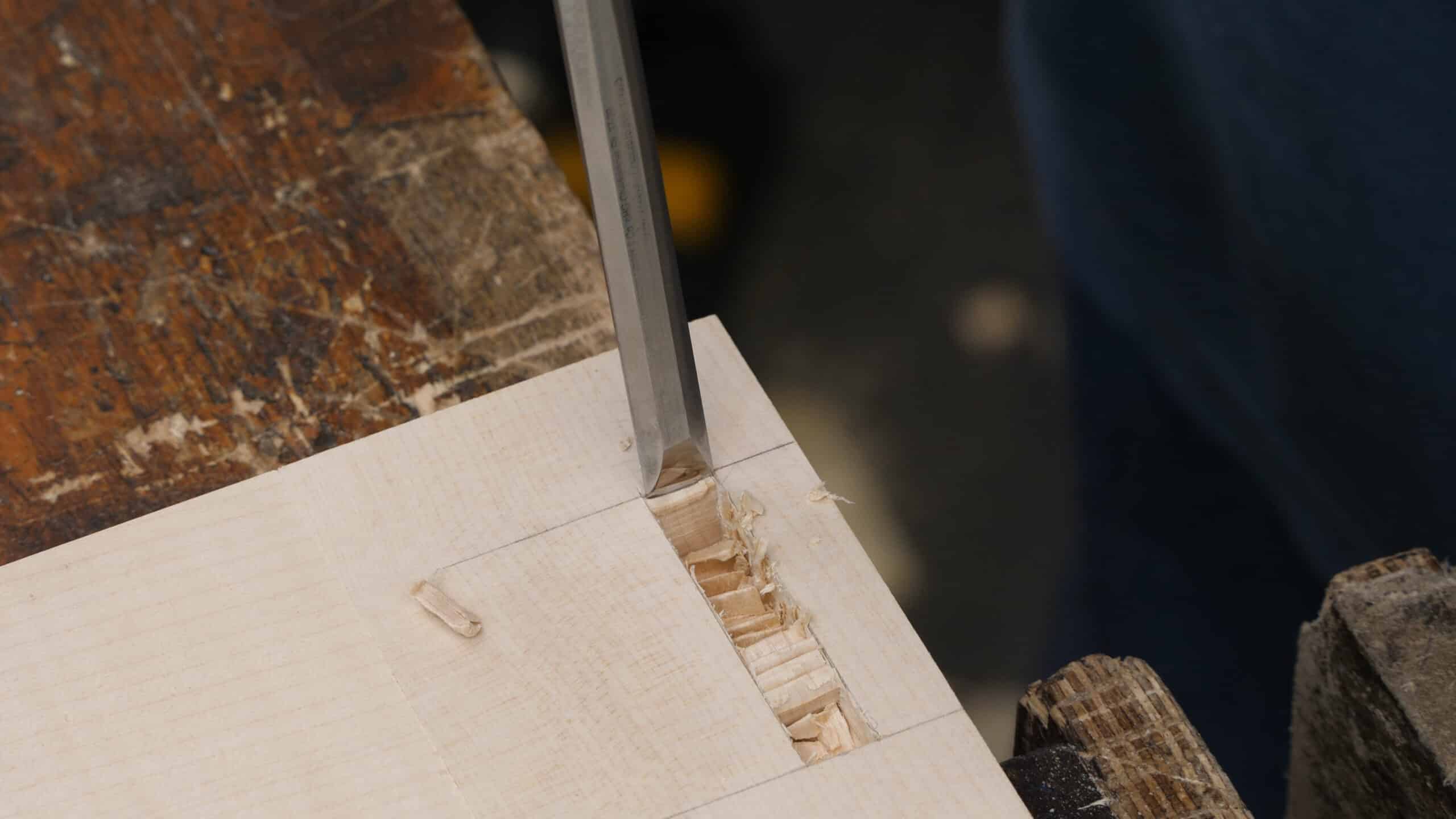Bedside Cabinet: Episode 5
Posted 13 December 2017
This is an episode in a paid series. Want to watch it? You just need to sign up as a paid member, and you can enjoy this video and many other videos we think you will love.
With the frames together, the joinery for the case of the cabinet can be laid out. The mortises are cut to exact depth and the rails prepared.


From a Seiko to a Fitbit — can’t stop change 😉
Would this method of joining the two side panels together (ie dovetailed top rail, stub tenon bottom rail) be appropriate for something like the cupboard on the floor behind you?
With these mortises, you use a knifewall to establish the exact length, whereas for the side frames and door, you just worked to pencil line. Is there are particular reason for this? Is accuracy in this dimension more critical for these joints than for the ones in the frames?
On the other hand, I notice that here, you don’t use a guide block for positioning of the mortise, whereas for the frames you did. Again, is there are reason why things are done this way?
Hello Tom,
When cutting a mortise in a ploughed groove, it is very difficult to establish a knifewall. You certainly can work to a knifewall when possible.
For shallow mortises, a guide is not necessary for alignment, which is why they are used in deeper mortises.
Phillip – The second long, 2″ board was used for what purpose?
Hello Dick,
In this it is just used as a reference point, but it is stock for aspects that have not yet been covered. Does that answer your question?
Best, Phil
Lovely to watch the intuitive way Paul lays out the shoulder lines and the mortises using the actual panels, rather than transferring measurements or doing lots of calculations from the cut list.
hello WWMC team,
I’m wondering what kind of wood Paul is using for the inner construction. I know the outside is curly maple & ripple sycamore but the darker wood he’s using to join the interior of this piece looks like maybe cherry, alder or some other darker wood (darker than the above two woods).
Thanks
Hello and Happy New Year,
Could you please confirm the width of these mortices? Paul says 3/8” in the video, but the plans suggest 5/16”…
I am really enjoying the project, by the way, and can’t thank Paul and the team enough for the skills I am developing.
Many thanks,
Tim
In reality, you could use either size……. 1/16 inch difference in width – that is, 1/32″ each side – is minimal on a M&T joint of that proportion.
Thanks for your reply. I thought that might be the case, but I’m pretty new to woodworking, so it’s good to hear a more experienced opinion!
Many thanks,
Tim